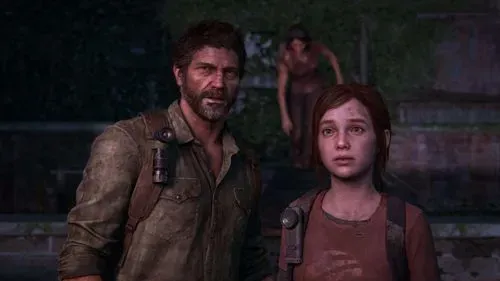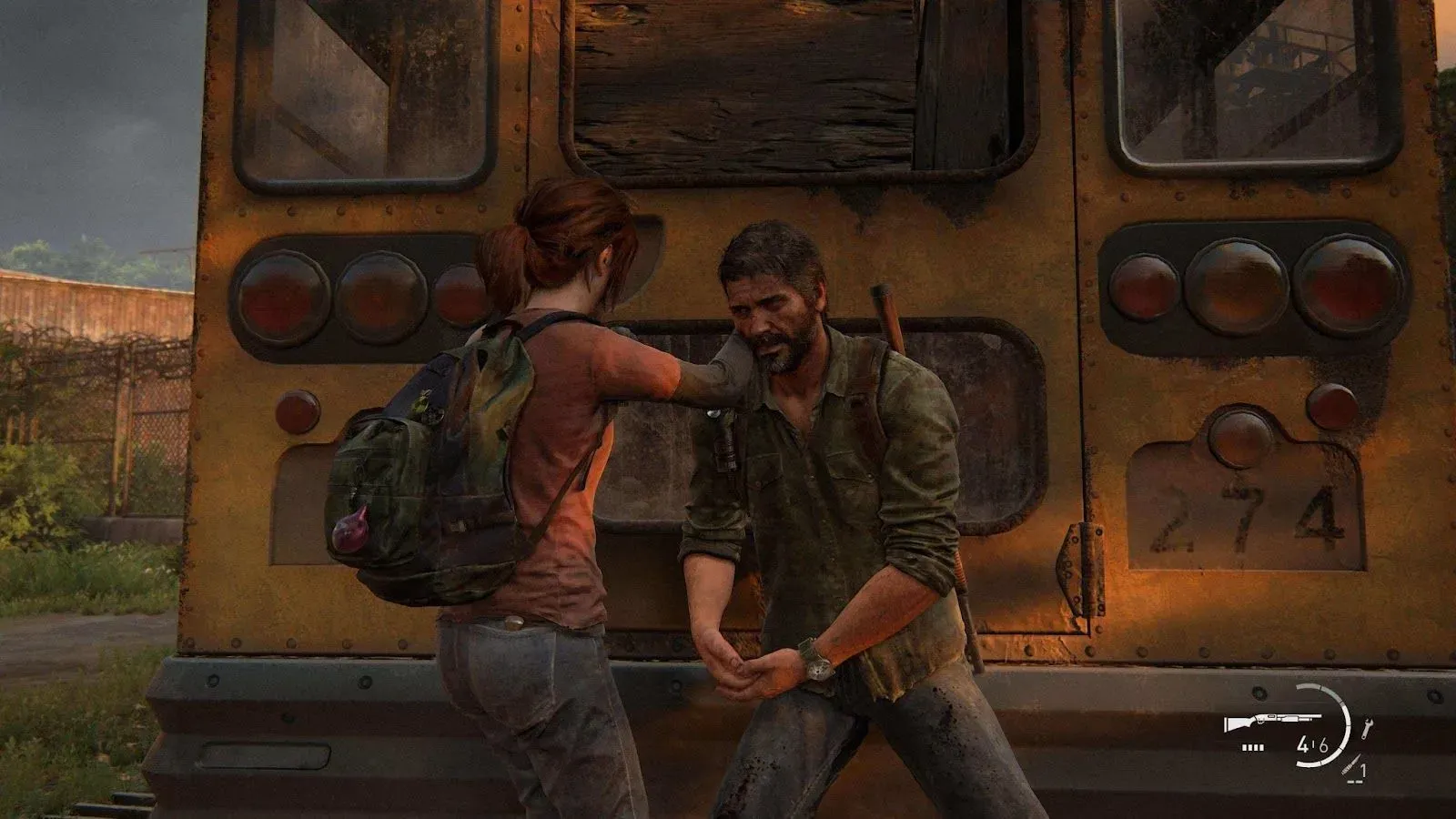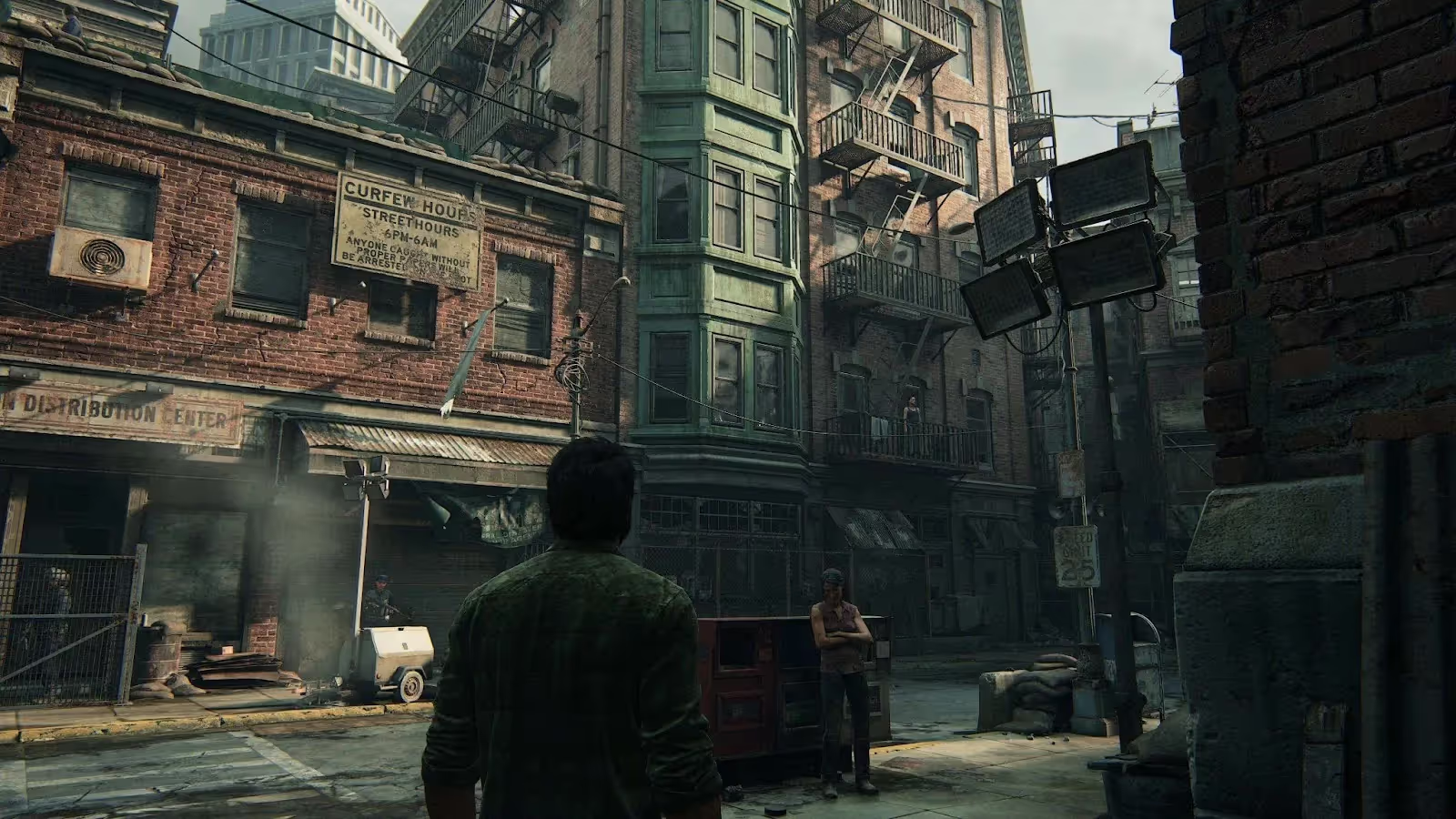PS5
PC
Before playing The Last of Us Part I, I wasn’t convinced that I was ready to brave Joel and Ellie’s journey again. Only two years removed from my most recent playthrough (in advance of the release of its sequel) the memories of their journey through an infected America were still pretty fresh. I questioned how exactly this ‘rebuilt’ version of an already undeniable classic could be improved in any tangible, meaningful, way. Perhaps this level of scepticism helped made the game’s opening scenes hit me like a ton of bricks all over again.
The Last of Us is one of my favourite games of all time and one of my favourite stories in any medium. So for it to catch me off guard in the way it did was pretty impressive. New levels of depth and nuance can be seen in every single performance, with advances in technology and a bump in resolution helping to amplify the emotion in characters' faces and build on the already stellar dramatic foundations. Characters and the world around them look and feel far more grounded and the most moving and memorable scenes felt more poignant and emotive than ever before. After just a few hours, it became abundantly clear why Naughty Dog opted to revisit their magnum opus once again.
As the standard bearers for cinematic storytelling in video games, it’s as if now the developer can finally deliver on its original vision of Joel and Ellie’s first chapter. Utilising the solid groundwork of the original game, The Last of Us Part I elevates every element, bringing it up to modern standards with new or updated textures and assets for every character and in every part of the world. It all feels incredibly familiar to a returning player like me, but it’s impossible to disregard the sweeping changes; changes that have been made to make the eerie and awesome world of The Last Of Us feel so much more authentic. As I look up at the dense, lush foliage growing in the streets of Pittsburgh or sneak through every house in Bill’s Town searching for supplies, I’m almost jealous of new players who are getting to experience this for the first time.

Like the performances in cutscenes, Naughty Dog has now been able to add more detail and life to this overgrown and rotting world. The sun shines beautifully between trees and through cracked glass windows, snow crushes gently underfoot and deadly spores fill dank hotel rooms and cavernous subway systems — that last one was less appealing, wasn’t it? All of this adds to an increased sense of place and atmosphere throughout the whole game. I often stopped to admire my surroundings and re-explore every nook and cranny — something I certainly hadn’t anticipated doing when I apprehensively booted up Part I for the first time.
Naturally, the power of the PlayStation 5 means that everything looks nicer but it also plays better too: ‘Performance Mode’, which targets 60fps in exchange for a 1440p resolution, feels great with combat and traversal feeling incredibly responsive. There’s no denying the bump to 4K in ‘Fidelity Mode’ makes the game look even better. However, I found the sacrifice to performance too heavy and that any differences were barely noticeable when actually playing the game; something that holds up exceptionally well.
Whilst there’s no denying that I could, at times, feel every bit of the game’s nine and a half year-old architecture and there were plenty of decade-old gameplay tropes on display, The Last Of Us Part I makes some minor changes and uses the technology at its disposal to improve on how it feels to play. For starters, objects in the world feel much weightier thanks to a software tweak but also with help from the PlayStation 5’s DualSense controller. This means that dragging over a dumpster to reach a new area now feels like, well, dragging a dumpster. The controller actually does plenty of heavy lifting (excuse the pun) when it comes to gameplay; some of the additions are almost indistinguishable if you’re not paying attention: The much talked-up bow-drawing can also be felt through the controller’s adaptive triggers, gentle vibrations can highlight changes of weather or terrain, with the changing of weapons or crafting being met with a rumble from the controller and the sound of muffled fumbling from the built-in speaker.

Traversal and combat remain largely the same from the remaster, so those hoping for the more action-oriented gameplay of The Last of Us Part II may be disappointed. Although characters did seem feel more weighty but that may have just been a bit of a placebo effect thanks to upgraded models — Ellie especially looks more like her younger self from Part II — and additional DualSense features. So whilst there are no sweeping changes — something that would have made this a very different game — Part I does adopt the way collectibles are viewed and weapons are upgraded in the sequel, which is a great new addition. The same goes for collectibles, resources, and tools appearing in the world as real, distinguishable objects as opposed to a roughly obscured assets.
All of this builds towards The Last of Us Part I being a more immersive experience. That is until Ellie wanders out in front of a Clicker only to be completely ignored. The companion AI is perhaps where the game most obviously exposes itself as a product of previous generations and a big part of me hoped that this would be resolved. And even though I only noticed it a handful of times, it still takes away from tense situations when it happens. What’s more, Naughty Dog has improved the AI for certain enemies.
In another unexpected change cribbed from Part II, Stalkers — arguably the creepiest of the game’s infected enemies — have had a complete overhaul in Part I, compared to their appearance in the original game. Adopting the more gangly and horrific look they took on in the sequel alongside their more skittish, animalistic, skulking behaviours so encountering them again added a slight gameplay change alongside a visual one. They’re not the only enemies to receive an AI improvement either, with the positioning and patterns of human adversaries also appearing to have had a fix up to make them far more attentive than their almost decade-old counterparts. These are all little changes on their own, but when combined they make a big difference to how Part I looks and plays, bringing this first chapter in line with how Naughty Dog wants players to recognise The Last of Us as a complete package.

I’d be remiss to not mention how Part I also includes the incredible additional prequel episode ‘Left Behind’. First released as DLC for the original game and included as part of the remaster in 2014, this small-scale story is an absolute must play. I’d have loved to have seen this woven into the new narrative of Part I, but I understand why it remains a separate piece. Other additions include a robust photo mode and myraid of skins for Joel and Ellie, many of them celebrating other PlayStation franchises. The in-game commentary from director Neil Druckmann, and stars Troy Barker and Ashley Johnson, returns from the remaster. However, this is unfortunately locked until a subsequent playthrough. Again, I get it, but it would have served as a unique new way for returning players to experience the game from the off.
So whilst Joel and Ellie won’t encounter anything wholly new in The Last of Us Part I and it’s been easy to question the reasoning for another re-release, or for some to even disregard it entirely, the amount of work Naughty Dog has undertaken is indisputable. There’s certainly an argument that could be made about this version ‘replacing’ the original, and in many ways it does, but it’s clear just by playing it that the developer ensured that the core of the game was maintained. Still, it’s a double-edged sword: Some will feel like Part I doesn’t do enough to justify its existence, where others may feel any vast changes would tarnish the legacy of a gaming touchstone.
As someone who openly admitted at the start of this review to worrying about returning to The Last Of Us so soon after my last playthrough, I can’t praise the work that has been done here enough. It might show its true age from time to time and if, like me, you don’t think you want to play this again so soon then it’ll be there when you want it. But for anyone who hasn’t yet played (or maybe will want to play once the TV show releases next year) it’s undoubtedly the definitive version of The Last of Us.
It’s not a remake, nor a remaster, it’s the restoration of a classic.
You can subscribe to Jump Chat Roll on your favourite podcast players including:
Let us know in the comments if you enjoyed this podcast, and if there are any topics you'd like to hear us tackle in future episodes!

.avif)


